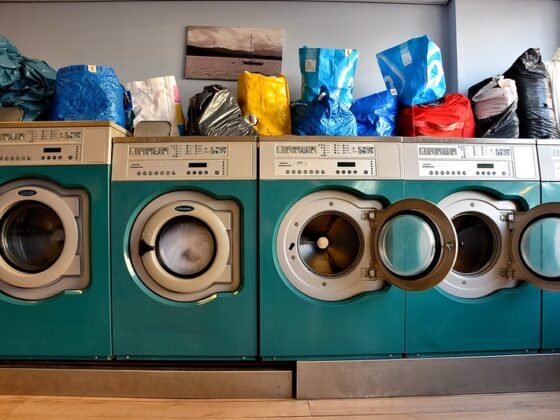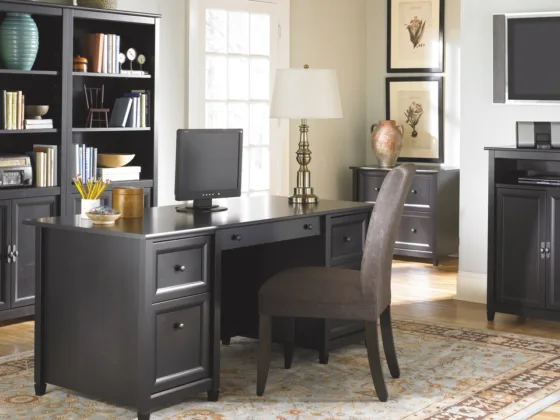Table of Contents Show
Are you sick and tired of looking at the ugly, old wall in your living room? It’s time to take action! In this blog post, we will go over 10 steps that will help you paint a wall yourself.
The first step is to grab some good-quality supplies. You’ll need a bucket or pail, water, brushes- flat and angled- rollers (2″ wide), roller pan/tray, and sponges.
Next up: clean the walls with either an all-purpose cleaner or white vinegar diluted with water.
Then prime them using a latex primer coat for best results; let dry completely before applying base coats.
Now it’s time for color! One important thing about painting a light color on dark walls.

Here Are Few Ways to Painting a Wall
1. Preparing Your Work Area
Protect your floor with a large drop cloth, newspaper, or plastic sheeting. You should also cover any furniture and remove anything delicate from the room to avoid accidents.
Put on old clothes that you don’t care about as paint will stain them. And finally, protect yourself by wearing protective gear like gloves to prevent skin irritation and a painter’s mask to stop inhalation of toxic paint fumes.
Now for the fun part! Get your buckets, brushes, rollers (both wide and narrow), sponges, or old rags and start rolling on that color!
2. Applying Primer
Primer is essential when painting any surface with a dark hue. If you’re using latex or acrylic paint, prime the walls first to ensure that they are properly sealed and will not peel or chip easily.
To apply primer, use either an all-purpose cleaner diluted with water or white vinegar diluted with water (both of which should strip any remaining residue or dirt from the surface of your walls).
For best results, apply a latex primer coat. You’ll want to allow it to dry completely before applying base coats (let’s be honest – you don’t have time for that!)
Primer not only protects the wall during painting but also provides a clean and smooth surface to paint on.
3. Move the Furniture
If you’re painting one wall, this step may not be necessary. But if you’re doing a large area or two walls side by side, then you’ll need to move your furniture out of the way.
You can use old rugs and sheets or blankets to cover up the furniture that is being moved out of position so it doesn’t get dirty.
Some furniture can be moved easily but others may need the help of a friend to hold it up and move it out of the way this is much more difficult with larger items like sofas.
If you’re unable to do this all by yourself, then just paint one wall at a time and put your couch back in place afterward.
Once the furniture is out of the way, it’s time to take down any curtains (if you have them) or blinds that are hanging on the wall and fold them up neatly so they don’t get in your way while painting.
Read Also:
4. Clean the Walls
This step is crucial in preventing paint from peeling off. To clean the walls, either use an all-purpose cleaner diluted with water or white vinegar diluted with water (both should strip any remaining residue or dirt from the surface of your walls).
After cleaning, let it dry completely before applying a primer coat for best results; make sure to prime the walls before applying paint to ensure they stay clean and in good condition.
If this is a large area, you may want to use a vacuum cleaner or broom (a wet one) for best results.
For light colors on dark walls: prep your work area by covering furniture with old sheets or blankets, protect yourself with protective gear like gloves and a painter’s mask, make sure your walls are clean or the paint will peel off.
5. Prep Up the Walls
To prepare the walls, use a roller to apply primer or paint on the surface of your wall. You may also want to go over portions with a brush for more detailed work.
Keep in mind that you shouldn’t have any bald spots if using multiple coats this is important when painting light colors as dark patches will show through and ruin the effect.
It’s also important to make sure that the surface is completely dry before applying a new coat of paint, so let it sit for at least fifteen minutes.
If you’re not happy with how your work turned out, don’t panic! You can always go back and apply another coat or fix up any spots where there are bald spots.
If you’re painting two walls next to each other, be sure that they are completely dry before moving on to the next step this will prevent overlap of paint from one wall onto the other.
6. Painting the Wall
Now for the fun part! Get your buckets, brushes (both wide and narrow), rollers, sponges, or old rags and start rolling on that color.
If you’re painting one wall at a time with any type of paintbrush then it will need to be washed in water between coats.
For roller work, you can just rinse the roller pan/tray after every coat.
For sponges, use a bucket of water instead and squeeze it out between coats to keep it clean for the next layer.
Paint smoothly in one direction (whether up and down or side to side) with an even application over your wall.
To avoid any drips, let the roller rest on your wall before moving it up or down.
Don’t forget to paint the edges of door frames and windowsills as well!
Paint in two coats for best results with either a flat or angled brush. The first coat should be applied without much pressure but enough to cover the wall.
The second coat should be applied with more force to ensure that it covers the first layer and doesn’t leave any streaks or dry patches behind.
To make your painting job easier, try using a roller for large surfaces followed by an angled paintbrush on the edges for the final touches.
If you need quality paint to buy from the market you can read various reviews from paintervalley.com
7. Paint with a Roller for Finish
If you’re painting one wall at a time then it’s important to use an angled paintbrush for the edges of door frames and windowsills.
If you only want to paint over parts of your walls, then this isn’t necessary – just apply primer or paint with a roller in long strokes up and down the painted surfaces.
To achieve an even finish, work in a set pattern: down and up to start, then left and right.
Apply two coats for best results with the roller use light pressure on the first coat (just enough to cover) followed by more force on the second coat without leaving any streaks or dry patches behind.
Conclusion Paragraph
We hope you’ve found this blog post to be helpful. If your goal is to paint a wall for the first time, these 07 steps are sure to get you started on the right foot! Remember that being prepared and organized will make painting easier.
Don’t forget the tools like rollers and brushes- both flat and angled- as well as a roller pan or tray and sponges. Good luck with your DIY project!









